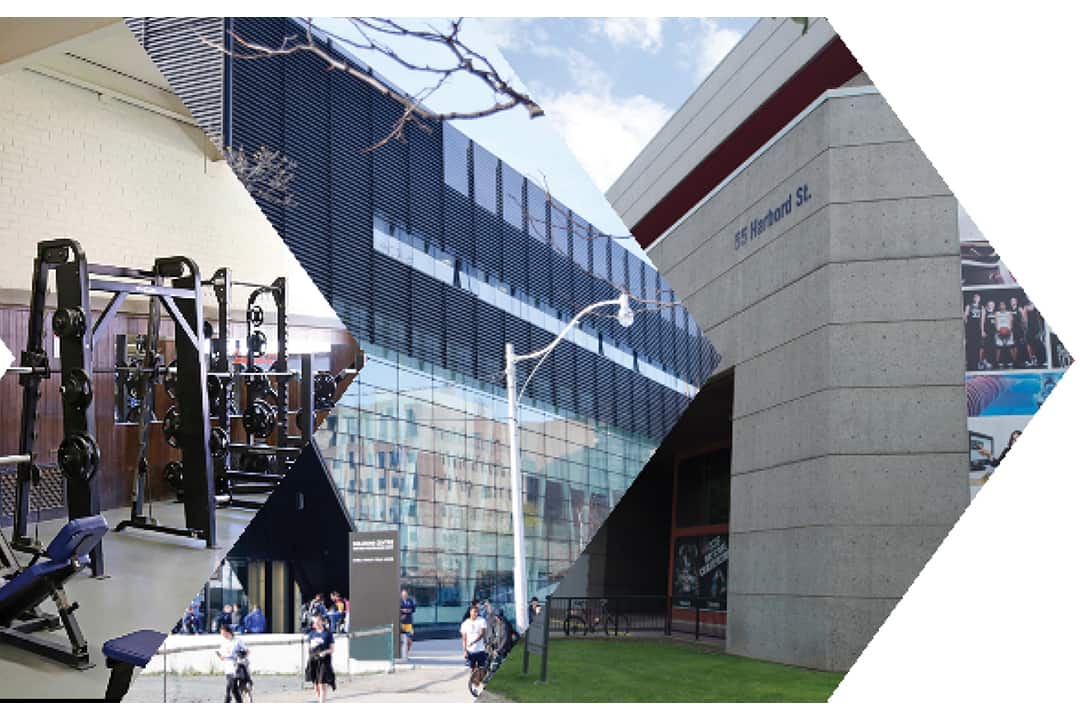U of T’s St. George campus offers lots of athletics facilities to help you work up a sweat. The Hart House gym, Goldring Centre for High Performance Sport, and Athletic Centre (AC) collectively offer anything a gym rat could dream of for getting active. However, one question must be asked: are these gyms accessible for all?
First, let’s look into Hart House, U of T’s multidisciplinary space. On its website, Hart House states that it “is proud of [its] continued effort to facilitate the inclusion of campus and community members of all abilities into [its] facilities and services.” Implemented measures in the building include elevator access to all floors, some accessible washrooms, lower counters, accessible doorways, and some barrier-free building entrances.
However, Hart House seems to be lacking some gym-specific accessibility amenities. The change rooms are not easy to get to, as they require a trip down some stairs. The facility layout on the whole is also difficult to maneuver, featuring many staircases, narrow hallways, and confusing layouts. Furthermore, the top floor, which boasts a track that encircles some cardio and weight machines, is crowded with equipment. Luckily, there is usually a lot of staff around who are ready to help, but nevertheless the disjointed layout leaves much to be desired.
The Goldring Centre is next on our list. This gym notably features an elevator, automatic doors, and accessible entrance gates when you scan your T-Card, in addition to the regular turnstiles. Accessible change rooms are on the second floor, and there are also alternate change rooms available to cater directly to those with specific needs: there are accessible, all-gender, and family change rooms, all with shower and washroom amenities. Goldring is also well-staffed, meaning there will always be someone nearby to help if something is out of reach, or if you need help with a machine. The facilities are also very well-kept and state-of-the-art, however, the main gym consists of three stories, which means it may be difficult for some to use the entire space.
The final option is the AC. Although the AC may be accessible in its program inclusivity, offering a staggering number of facilities for a wide range of athletics, its actual infrastructure is incompatible for someone who is not completely mobile. The AC boasts of its “seven gymnasia, three pools… strength and conditioning centre, indoor track, dance studio, cardio machines, tennis and squash courts, and steam rooms,” but its counterintuitive layout and multiple barriers for entry restrict some who may want to use these spaces.
The change rooms and restrooms, for example, although accessible, are hard to get to, being located in the basement and requiring visitors to go down a flight of stairs.
There are also tricky turnstiles that members need to walk through, and even once you’re in the main facility, getting around can be quite confusing for even the best of us. One Google reviewer aptly called it “a big maze,” referring to the design and size of the building, which makes navigation especially difficult, and can lead to a lot of wasted time walking in circles.
It seems like every gym is lacking in some way or another when it comes to accessibility, so while it’s important to choose the facility that best suits your needs, it’s clearly time for U of T to raise its bar for accessibility standards at all of its gyms.


